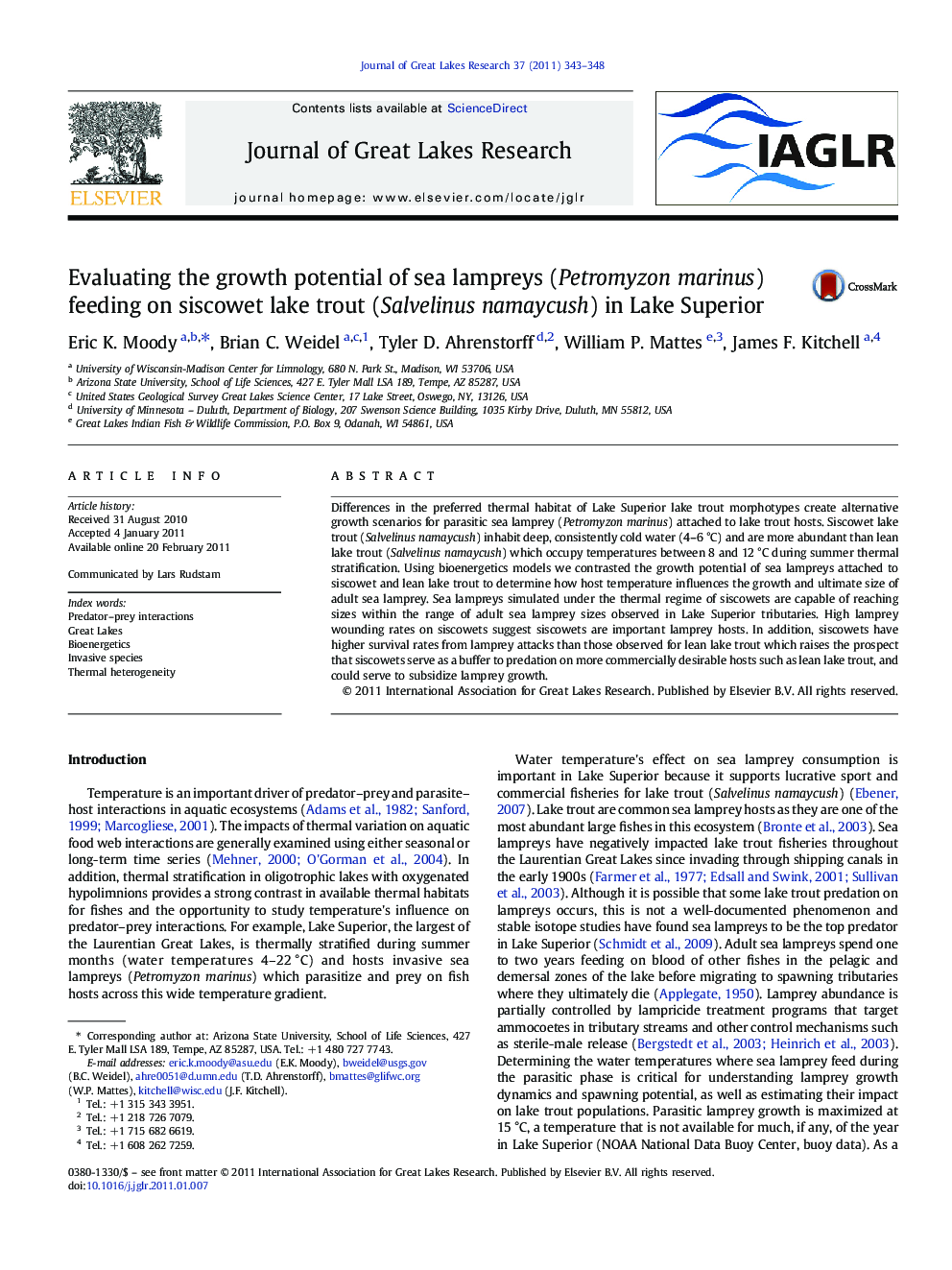| کد مقاله | کد نشریه | سال انتشار | مقاله انگلیسی | نسخه تمام متن |
|---|---|---|---|---|
| 4398932 | 1306710 | 2011 | 6 صفحه PDF | دانلود رایگان |

Differences in the preferred thermal habitat of Lake Superior lake trout morphotypes create alternative growth scenarios for parasitic sea lamprey (Petromyzon marinus) attached to lake trout hosts. Siscowet lake trout (Salvelinus namaycush) inhabit deep, consistently cold water (4–6 °C) and are more abundant than lean lake trout (Salvelinus namaycush) which occupy temperatures between 8 and 12 °C during summer thermal stratification. Using bioenergetics models we contrasted the growth potential of sea lampreys attached to siscowet and lean lake trout to determine how host temperature influences the growth and ultimate size of adult sea lamprey. Sea lampreys simulated under the thermal regime of siscowets are capable of reaching sizes within the range of adult sea lamprey sizes observed in Lake Superior tributaries. High lamprey wounding rates on siscowets suggest siscowets are important lamprey hosts. In addition, siscowets have higher survival rates from lamprey attacks than those observed for lean lake trout which raises the prospect that siscowets serve as a buffer to predation on more commercially desirable hosts such as lean lake trout, and could serve to subsidize lamprey growth.
► We provide in situ thermal regime data for siscowet lake trout in Lake Superior.
► We model the growth potential of sea lampreys feeding at these cold temperatures.
► Lampreys can feed at low temperature inhabited by siscowets and grow to adult size.
Journal: Journal of Great Lakes Research - Volume 37, Issue 2, June 2011, Pages 343–348